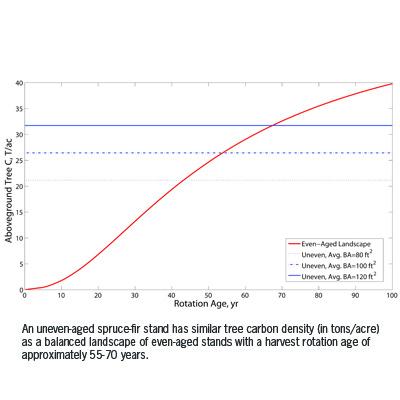Balancing Economic Productivity and Structural Diversity in Uneven-Aged Management of Spruce-Fir Forests

The majority of forest land in the Northeast is held by small, nonindustrial owners who have a range of management objectives related to aesthetics, wildlife habitat, emulation of natural disturbance, and carbon sequestration. In the Northern Forest region, uneven-aged forest management represents one possible strategy for meeting a range of goals. The U.S. Forest Service developed a set of silvicultural guidelines for uneven-aged management of spruce-fir forests based primarily on work at the Penobscot Experimental Forest in Maine in the 1970s. However, these guidelines were developed without explicit attention to landowner objectives and may even yield negative discounted financial returns.
NSRC researchers improved upon these traditional guidelines using existing forest measurement data and a variety of new mathematical tools. Simplified tools for improved management of spruce-fir forests will be available by contacting the principal investigators. Their approach offers more flexible specification of stand diameter distributions than is possible with traditional guidelines and allows for evaluation of tradeoffs among economic, structural, habitat, and carbon sequestration goals.
Researchers found that an uneven-aged spruce-fir stand has similar tree carbon density to a balanced landscape of even-aged stands with a harvest rotation age of approximately 55-70 years. For stands to remain uneven-aged, growth of new trees must continue, so density cannot be too heavy. This limits the amount of carbon that can be stored. If a primary objective is carbon sequestration, there is no clear advantage to uneven-aged management of spruce-fir forests because it is difficult to sustain high carbon densities and numbers of large trees.
Download printable version [PDF]
Download full final report [PDF]
